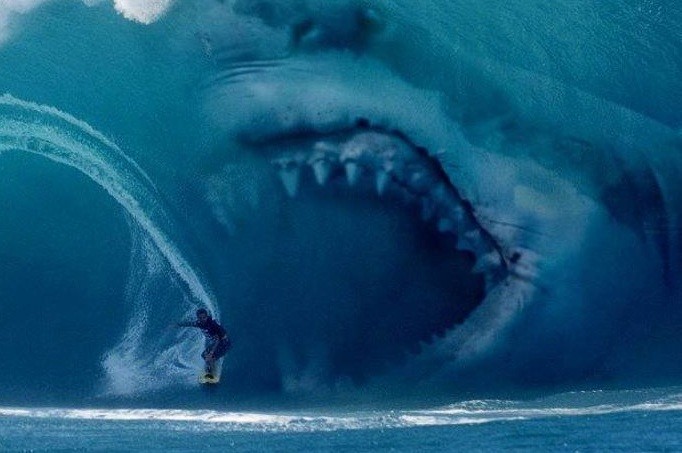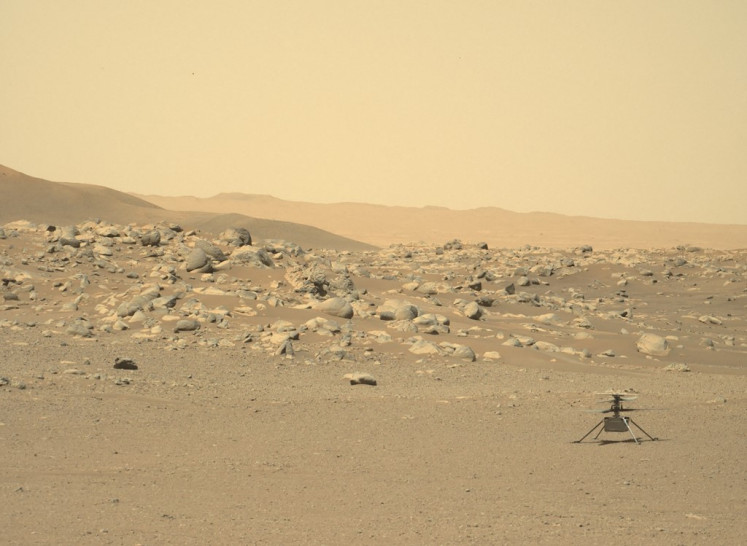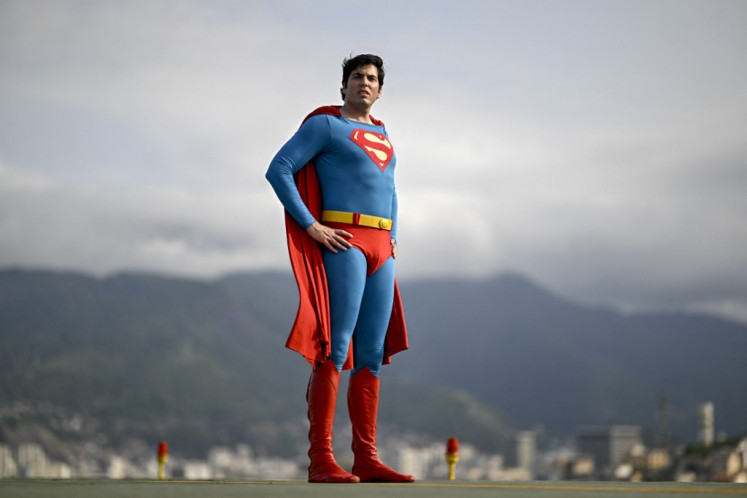'The Meg': Great wide line between fiction and fact
The Meg is a larger and angrier version of Jaws – or so its trailer claims.
Change Size
 A still from 'The Meg' (Apelles Entertainment/File)
A still from 'The Meg' (Apelles Entertainment/File)
The Meg is a larger and angrier version of Jaws. At least, that's what its trailer claims.
Like the Spielberg classic, The Meg features a great big shark killing every human being in sight – except that the shark happens to be the extinct megalodon.
Megalodons are a new entry in the movie industry that previously used only great whites (and even sharks that walk on land). But now, the producers are using the prehistoric shark as their ace card for the fear factor.
Megalodons died out millions of years ago, but The Meg's creators hang the film's thread on the fact that only 5 percent of the ocean has been explored and that the megalodon just might be lurking somewhere in the cold, dark depths of the Mariana Trench. According to the movie, the Mariana Trench seems to have no bottom.
Now everybody will be afraid that they will encounter a gigantic, prehistoric shark that will eat them alive.
While The Meg follows the Hollywood formula for every shark film (shark and humans meet, shark eats everything, shark becomes a threat to humanity), the scariest thing about shark movies is that they are set in an easily accessible location: a beach.
In films like Anaconda, the characters have to go to the middle of a jungle; Jurassic World takes place on a nonexistent island that most (fictional) tourists would never visit. But The Meg takes place on an ordinary beach, resembling any beach that anyone may have visited during summer vacation.
Let's take a look at the facts for a moment.
A megalodon has a maximum weight of about 50-70 metric tons. A 70-ton megalodon needs to eat at least 2.1 tons of food every day. A humpback whale weighs about 25-30 metric tons, which is more than enough for the megalodon to get by for a few days, especially considering how long it might take to digest the whale. So there is no way a Megalodon would be able to wipe out an entire colony of humpback whales in a day, like the movie suggests.
Humans are also not a natural prey animal for sharks, let alone megalodons, which would go for much bigger prey.
Read also: 'Carnivore' sharks have a stomach for greens: Study
The Meg also claims that the megalodon has somehow been living under some kind of sulfuric cloud beneath the Mariana Trench. The difference in pressure at the bottom of the Mariana Trench and the ocean's surface is too great and the shark wouldn’t be able to swim straight up without experiencing decompression sickness.
Whales can dive as deep as 2,000-3,000 meters and resurface, so the prehistoric shark probably wouldn’t make it to the surface without succumbing to the pressure difference and dying.
According to research, while most deep sea animals can survive different pressures, it’s the temperature that kills them. The sulfuric cloud the megalodon lives under happens to be warm, but when it’s exposed to the cold waters of the trench, it should simply die.
While The Meg might fuel the conspiracy theory that megalodons might still exist in the Mariana Trench, I still don't think it’s possible.
But why am I pointing out these facts?
Sharks have suffered a lot of negative propaganda for many decades, ever since the movie industry decided to depict them as crazed human-eating machines. There are so many people out there who are convinced that they’ll get dragged down and eaten by a shark if they walk out too far in the ocean. In fact, sharks are one of the most feared animals, together with snakes and spiders. It’s amazing to see how confused people look when they learn that only seven unprovoked shark attacks were recorded in 2010.
The only sharks known to attack humans are the great white, tiger and bull sharks. Other sharks will shy away from humans and will only attack if they’re constantly provoked. If movies keep telling people that sharks are dangerous, people will feel more compelled to attack sharks – dubbed the great ocean predator –and down a lot of shark fin soup.
In fact, sharks are actually a great enigma. There are no great whites on record that have survived captivity. They keep dying in a tank and nobody knows why. Instead of holding on to such fears, people should actually try to understand more about the great mystery surrounding this apex predator.
Hollywood movies are known for twisting animals into something they’re not. Take the T-rex from Jurassic Park. While T-rexes were fast walkers, they were generally unable to run and could certainly not catch up to a speeding car. The running T-rex was only added for the thrill factor – yet many people out there remain misinformed about this fact.
I truly believe that Hollywood movies should add disclaimers at the end of their movies. Instead of promoting irrational fears about wildlife, they should be spreading animal conservation. While it's the exaggerated facts that make Hollywood movies fun, the spread of false information can be crippling in the long run. (kes)









